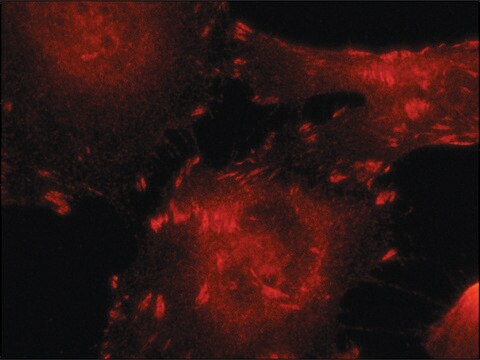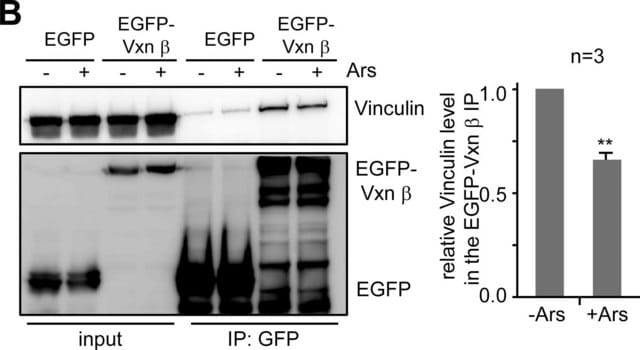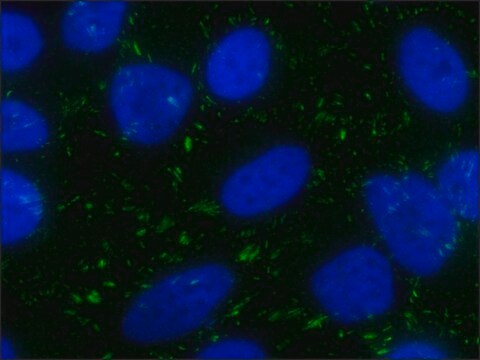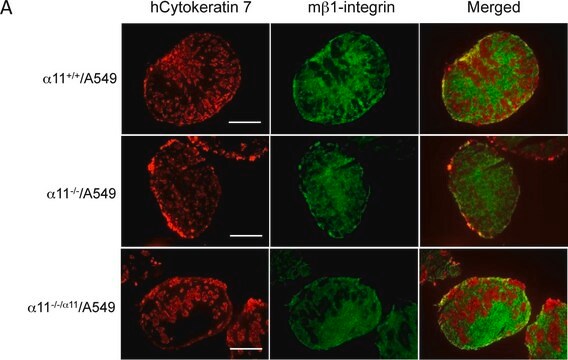Kluczowe dokumenty
SAB4200694
Przeciwciało anty-Talin, mysie monoklonalne
clone 8D4, purified from hybridoma cell culture
Synonim(y):
Tln
About This Item
Polecane produkty
pochodzenie biologiczne
mouse
Poziom jakości
forma przeciwciała
purified immunoglobulin
rodzaj przeciwciała
primary antibodies
klon
8D4, monoclonal
Formularz
buffered aqueous solution
reaktywność gatunkowa
Xenopus, rat, chicken, human, bovine, sheep, hamster
stężenie
~1 mg/mL
metody
ELISA: suitable
flow cytometry: suitable
immunoblotting: 1-2 μg/mL using whole extract of hamster CHO cells.
immunofluorescence: 2.5-5 μg/mL using chicken UMNSAH/DF1 cells.
izotyp
IgG1
Warunki transportu
dry ice
temp. przechowywania
−20°C
docelowa modyfikacja potranslacyjna
unmodified
informacje o genach
chicken ... Tln1(395194)
human ... TLN1(7094)
rat ... Tln1(313494)
Powiązane kategorie
Opis ogólny
Immunogen
Zastosowanie
- immunoblottingu
- immunofluorescencja
- sortowanie komórek aktywowane fluorescencją (FACS)
- test immunoenzymatyczny (ELISA)
Działania biochem./fizjol.
Postać fizyczna
Oświadczenie o zrzeczeniu się odpowiedzialności
Nie możesz znaleźć właściwego produktu?
Wypróbuj nasz Narzędzie selektora produktów.
Kod klasy składowania
10 - Combustible liquids
Klasa zagrożenia wodnego (WGK)
WGK 1
Temperatura zapłonu (°F)
Not applicable
Temperatura zapłonu (°C)
Not applicable
Wybierz jedną z najnowszych wersji:
Certyfikaty analizy (CoA)
Nie widzisz odpowiedniej wersji?
Jeśli potrzebujesz konkretnej wersji, możesz wyszukać konkretny certyfikat według numeru partii lub serii.
Masz już ten produkt?
Dokumenty związane z niedawno zakupionymi produktami zostały zamieszczone w Bibliotece dokumentów.
Global Trade Item Number
| SKU | GTIN |
|---|---|
| SAB4200694-100UL | 4061837726149 |
Nasz zespół naukowców ma doświadczenie we wszystkich obszarach badań, w tym w naukach przyrodniczych, materiałoznawstwie, syntezie chemicznej, chromatografii, analityce i wielu innych dziedzinach.
Skontaktuj się z zespołem ds. pomocy technicznej








